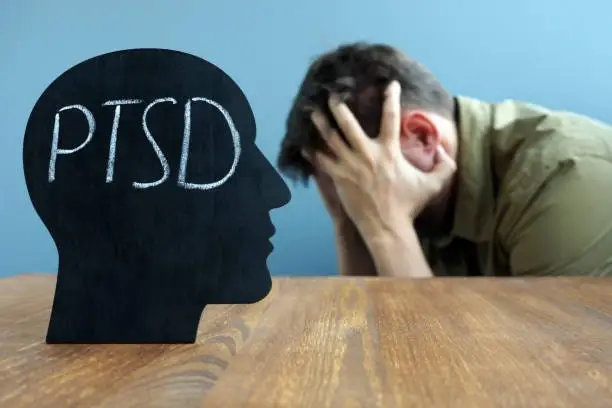Post-traumatic stress disorder (PTSD) is a serious mental health condition that can have profound effects on individuals and their loved ones, both physically and emotionally. But if you’re someone, suffering from PTSD, you know all too well the impact that triggers can have on your daily life. Fortunately, there are effective treatments that exist to help you manage and alleviate these triggers. In this blog, we’ll delve into the realm of PTSD treatment, exploring therapeutic approaches, medications, and practical self-care tips designed to bring relief and peace in the face of triggers.
Contents
What Is PTSD: Symptoms of It
Post-traumatic stress disorder (PTSD) is a mental health condition that can develop in individuals who have experienced or witnessed a traumatic event. Traumatic events can include but are not limited to, physical or sexual assault, natural disasters, combat exposure, serious accidents, or the sudden loss of a loved one.
Symptoms of PTSD
- Recurrent and intrusive memories of the traumatic event
- Avoidance of situations that may trigger memories of the event
- Hypervigilance
- Nightmares
- Flashbacks
- Irritability
- Difficulty concentrating
- Negative changes in beliefs and feelings
- Distorted feelings of guilt or blame
- Loss of interest in activities once enjoyed
- Feeling emotionally numb
- Sleep disturbances
- Heightened startle response
- Difficulty experiencing positive emotions
- Detachment from others
- Reckless or self-destructive behavior
- Difficulty remembering aspects of the traumatic event
Remember, these symptoms can be intense and long-lasting, and can significantly affect an individual’s daily life. While PTSD can indeed be a formidable adversary, effective treatments are available to empower individuals to regain control over their lives. Through a comprehensive treatment approach encompassing therapy, medications, and self-care strategies, individuals can confront the debilitating symptoms of PTSD and embark on a journey toward healing and restoration.
Assess Your Mental Health: Take the PTSD Quiz
Are you experiencing symptoms of post-traumatic stress disorder (PTSD) but unsure if you should seek help?
Take our PTSD quiz to gain insight into your mental health and discover if you may be experiencing signs of PTSD.
Simply watch the video and complete the quiz. 👉👉
Or take our: Comprehensive Test
Remember, recognizing and addressing mental health concerns is an important step towards healing and well-being.
Best Treatments for PTSD

There are various types of effective treatments available for PTSD, and choosing the best treatment for each individual may depend on the severity of their symptoms, their history of trauma, and their personal preferences. The following are some of the most commonly used and effective PTSD care options:
Cognitive Processing Therapy
 Cognitive Processing Therapy (CPT) is a type of cognitive-behavioral therapy that is an effective treatment for PTSD. CPT is a structured, short-term therapy that typically involves 12 sessions, with each session lasting about an hour.
Cognitive Processing Therapy (CPT) is a type of cognitive-behavioral therapy that is an effective treatment for PTSD. CPT is a structured, short-term therapy that typically involves 12 sessions, with each session lasting about an hour.
Now CPT helps individuals process their traumatic experiences by addressing the negative thoughts and beliefs that developed as a result of the trauma.
- During CPT, the therapist helps the individual identify and challenge their negative thoughts and beliefs related to the traumatic event.
- The therapist guides the individual through a process of examining the evidence for and against these negative beliefs and helps them develop more balanced and accurate thoughts about the trauma.
- By changing negative thoughts and beliefs, CPT can help reduce PTSD symptoms and improve overall well-being.
Prolonged Exposure Therapy
 Prolonged Exposure Therapy (PE) is a form of cognitive-behavioral therapy that is effective in the treatment of PTSD (post-traumatic stress disorder).
Prolonged Exposure Therapy (PE) is a form of cognitive-behavioral therapy that is effective in the treatment of PTSD (post-traumatic stress disorder).
PE involves helping individuals to confront their traumatic memories in a safe and supportive environment, to reduce the distress associated with those memories.
- The therapy typically involves a series of sessions, during which the therapist will guide the individual through a process of gradually confronting the traumatic memories.
- This may involve asking the individual to recount the details of the traumatic event, or to engage in activities that are associated with the trauma (such as visiting a place that triggers memories of the event).
- The therapist will work with the individual to manage their emotional reactions to the memories and to develop coping strategies that can be used outside of the therapy session.
Eye Movement Desensitization and Reprocessing
 EMDR (Eye Movement Desensitization and Reprocessing) is a type of psychotherapy. It is effective in the treatment of PTSD (post-traumatic stress disorder).
EMDR (Eye Movement Desensitization and Reprocessing) is a type of psychotherapy. It is effective in the treatment of PTSD (post-traumatic stress disorder).
EMDR aims to help individuals process traumatic memories and reduce their emotional distress by using a specific protocol that includes eye movements, tapping, or other forms of bilateral stimulation.
- During an EMDR session, the therapist will ask the individual to recall a traumatic event and focus on the emotions and physical sensations associated with it.
- The therapist will then guide the individual through a series of eye movements or other forms of bilateral stimulation, while they continue to focus on the traumatic memory.
- The therapist may also use techniques such as guided imagery or cognitive restructuring to help the individual process the traumatic memory and develop more adaptive beliefs about the event.
Medications
 Medication is effective as a part of the treatment plan for PTSD (post-traumatic stress disorder). However, it is typically useful in conjunction with therapy rather than as a standalone treatment.
Medication is effective as a part of the treatment plan for PTSD (post-traumatic stress disorder). However, it is typically useful in conjunction with therapy rather than as a standalone treatment.
Several types of medications are helpful to treat PTSD, including antidepressants, anti-anxiety medications, and antipsychotics.
Antidepressants, such as selective serotonin reuptake inhibitors (SSRIs) and serotonin-norepinephrine reuptake inhibitors (SNRIs) are effective in reducing symptoms such as depression, anxiety, and intrusive thoughts.
In adults, paroxetine, sertraline, and venlafaxine are among the medications recommended for the treatment of PTSD as they help individuals by regulating neurotransmitter levels in the brain, which can help alleviate symptoms of depression, anxiety, and intrusive thoughts.
Remember! While medications alone are not sufficient to address the complexities of PTSD, they can be invaluable when used as part of a comprehensive treatment plan. When combined with therapy and self-care strategies, medications can significantly improve symptoms and enhance the overall quality of life for individuals living with PTSD.
Stress Inoculation Training
Stress Inoculation Training (SIT) is a form of cognitive-behavioral therapy. This is effective in the treatment of PTSD (post-traumatic stress disorder).
SIT is useful for individuals to develop coping strategies and resilience in the face of stressful situations, including those related to their traumatic experiences.
SIT typically involves a series of sessions with a therapist. During this, the individual learns a variety of coping strategies that help to manage stress and anxiety. These strategies may include relaxation techniques, such as deep breathing or progressive muscle relaxation, cognitive restructuring, which involves changing negative thought patterns, and behavioral skills training, which involves learning new behaviors that can help the individual cope with stressful situations.
Self-Care Tips To Manage PTSD
 Here are the top five self-help tips for PTSD care:
Here are the top five self-help tips for PTSD care:
- Connect with caring people: Stay with people who understand and support you. Talk to them about your feelings, experiences, and challenges.
- Relax and de-stress: Take time each day to try breathing exercises, stretching, or walking in nature.
- Exercise regularly – It can help reduce symptoms of depression, anxiety, and even intrusive thoughts or flashbacks.
- Journaling: This can help reduce stress levels by providing an outlet to express emotions safely, as well as helping to better understand yourself and the events that contribute to your condition.
- Get enough sleep: Lack of restorative sleep can be a major contributor to mental health issues so make sure you get enough rest. Practice healthy sleeping habits such as avoiding screens before bed, and creating a soothing sleep space.
By following these self-help tips for PTSD care, you can start taking steps toward managing and improving your mental health today.
Conclusion
In conclusion, PTSD (post-traumatic stress disorder) is a mental health condition that can develop following exposure to a traumatic event. There are several evidence-based treatments for PTSD, including Prolonged Exposure Therapy, EMDR, medication, and Stress Inoculation Training. The choice of treatment will depend on individual factors such as the severity of the symptoms, the individual’s preferences, and their response to previous treatments. It is important to note that PTSD is a treatable condition, and with the right treatment and support, individuals can learn to manage their symptoms and lead fulfilling lives.
For more information, please contact MantraCare. PTSD or Post-Traumatic Stress Disorder is a mental health condition that affects people who have experienced or witnessed a traumatic event. If you have any queries regarding Online PTSD Counseling experienced therapists at MantraCare can help: Book a trial PTSD therapy session


